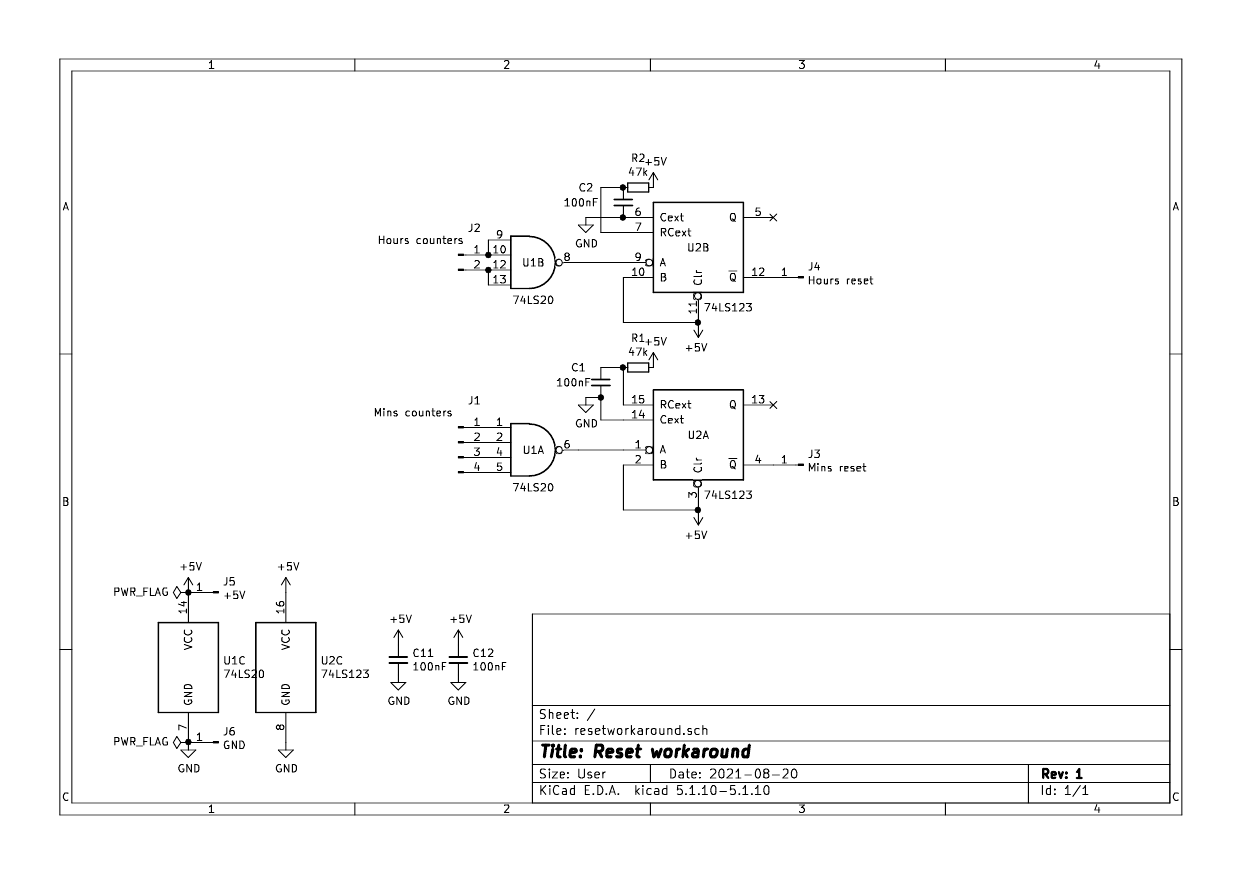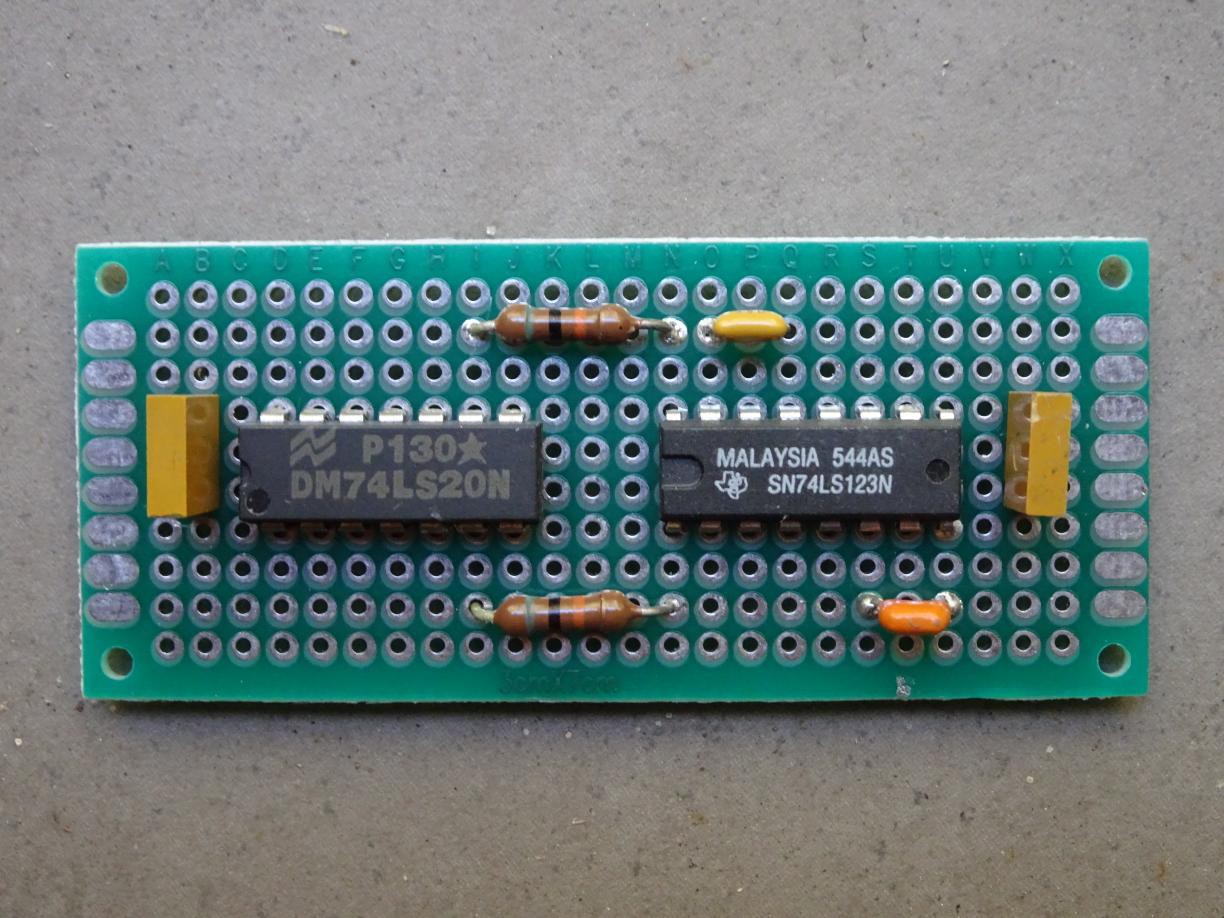I thought I had finished with this clock and could let it go on blinking for the the rest of its/my life , but I discovered that it would sometimes glitch when going from 59 minutes to 0, the 8's LED would stay on. The clock would gain 8 minutes that hour.
The problem was obviously due to my use of ripple counters. When the count reaches 60 = 2^5 + 2^4 + 2^3 + 2^2, the 4-input NAND gate should trigger and generate a negative going reset pulse. Unfortunately if the 8's flip-flop is slow resetting, the reset pulse would disappear before the reset is complete on that flip-flop.
The solution is to add a pulse stretcher. A 74LS123 dual retriggerable monostable is added after the outputs of the 74LS20 gates to ensure that we get a suitably long reset pulse. The R and C values chosen give a pulse width of 2 ms which should be enough. Incidentally it's the first time I've put a retriggerable monostable to use. I knew about these devices but never had the opportunity. I suppose you could use a 556 also.

The circuit was built on a piece of double sided PTH perfboard and connected to the 74LS20 pads by wire. It's a "solder-in" replacement, a NAND gates and pulse stretchers combination. This is the board before the fly leads were soldered. There are 10 in all, 5 for the minutes NAND, 3 for the hours NAND, and 2 for power.

Unfortunately an exposure sufficient to show PCB details washes out the LEDs, but the hours are red, the minutes yellow, and the seconds blinker blue.

What time is it, Mr. DTLclock? 🕰️
 Ken Yap
Ken Yap
Discussions
Become a Hackaday.io Member
Create an account to leave a comment. Already have an account? Log In.